Everyone has heard it before- Don’t drink and drive. Fatal automobile accidents increase dramatically during high traffic seasons, and holidays are the worst, combining more vehicles on the road with an increased number of intoxicated drivers.
But what about intoxicated pedestrians? New Year’s Eve has the fifth highest number of crash fatalities overall, but it is the number one day for pedestrian crash deaths. The same factors that are involved with general crash fatalities are present on New Year’s Eve, with the added component that many pedestrians choose to walk home intoxicated, rather than risk their lives and the lives of others behind the wheel.
However, drunken walkers are still engaging in a risky undertaking. Alcohol negatively affects the brain‘s ability to focus and it slows down the whole body’s reaction time. Consequently, intoxicated drivers and intoxicated pedestrians have less coordination, difficulty processing information, and following moving objects. The physical limitations imposed by drinking heavily makes driving or even walking near traffic dangerous in itself. However, drinking also limits a person’s mental faculties. In addition to the physical effects of alcohol, intoxicated persons experience loss of judgment and a decreased ability to perform two tasks at once. In other words, a drunk person makes more bad decisions than a sober person, but is less capable of handling the consequences.
For example, a pedestrian may leave a bar with a group of friends headed to the night’s next destination. The group has a boisterous conversation and is quite unaware of their surroundings. The leader of the group walks backwards in order to see everyone. Although he is aware that a crosswalk is coming up, his brain has trouble processing risk, and he does not stop to determine whether he has the right of way. Crossing without a second thought, the pedestrian is hit by a driver with a green light who thought the pedestrian would stop at the edge of the sidewalk.
To prevent such tragedies, pedestrians who plan on drinking should find a friend to look out for their safety and might consider taking a taxi or public transportation instead of walking. Drivers should never assume that a pedestrian will yield to an oncoming car and should approach crosswalks with caution.
California Vehicle Code Section 21950 gives the right of way to pedestrians in marked crosswalks and at unmarked intersections. The statute places a heavy burden on drivers of vehicles. Despite having the right of way at a green light, drivers are still responsible for slowing down at intersections for bold or inattentive pedestrians who challenge the light. The statute imposes a duty on drivers to exercise due care for the safety of any pedestrian in a marked crosswalk and at intersections. Pedestrians also have the duty of using due care to ensure their own safety, and they are admonished not to walk into the path of oncoming vehicles. However, the statute also provides that the pedestrian’s duty to act in a safe manner does not relieve any driver’s duty to exercise due care. Drivers who are not reasonably cautious may find themselves fully or partially liable for the costs of an accident for breaching the duty imposed by California Vehicle Code Section 21950.
Finally, December is the darkest month in the United States and low visibility increases the chance of pedestrian fatalities on days like New Year’s Eve. The Brod Law Firm encourages pedestrians and drivers to remain prudent and to plan their night ahead of time to limit exposure to dangerous situations. Revelers can celebrate at a hotel, hand their car key over to a trustworthy friend, and keep a taxi’s number on hand.
Continue Reading ›
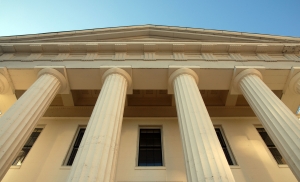
 San Francisco Injury Lawyer Blog
San Francisco Injury Lawyer Blog













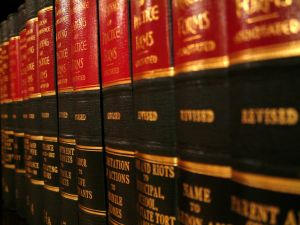 As another year comes to a close, The Brod Law Firm wants to thank all the clients who entrusted us to help them in their legal matters throughout 2011. We are proud of our work as your
As another year comes to a close, The Brod Law Firm wants to thank all the clients who entrusted us to help them in their legal matters throughout 2011. We are proud of our work as your  We hope all the children in your lives were thrilled by the presents that come with Christmas, Hanukah, Kwanza, and other late-in-the-year celebrations. These presents should be the source of smiles and many hours of joy, ideally bringing the family together for an added bit of enjoyment. While we do not wish to set a gray cloud on such happy times, we do want to remind parents to always exercise caution. As
We hope all the children in your lives were thrilled by the presents that come with Christmas, Hanukah, Kwanza, and other late-in-the-year celebrations. These presents should be the source of smiles and many hours of joy, ideally bringing the family together for an added bit of enjoyment. While we do not wish to set a gray cloud on such happy times, we do want to remind parents to always exercise caution. As 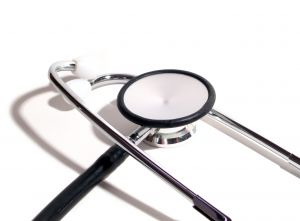 As the CNN article points out, most doctors are able to schedule holiday shifts to accommodate family traditions. While some are on call, most still get to enjoy the season with their families. However, there must always be a full contingent of nurses on duty to care for those who are spending the holiday in a hospital bed recovering from either illness or injury. A hospital patient often spends many more hours with the nurses than with the doctors, but nurses rarely get the credit they are due. They work long shifts, often twelve hours at a time, yet they remain ready to not only care for the health of their patients but also to brighten their spirits with warmth and little acts of kindness.
As the CNN article points out, most doctors are able to schedule holiday shifts to accommodate family traditions. While some are on call, most still get to enjoy the season with their families. However, there must always be a full contingent of nurses on duty to care for those who are spending the holiday in a hospital bed recovering from either illness or injury. A hospital patient often spends many more hours with the nurses than with the doctors, but nurses rarely get the credit they are due. They work long shifts, often twelve hours at a time, yet they remain ready to not only care for the health of their patients but also to brighten their spirits with warmth and little acts of kindness.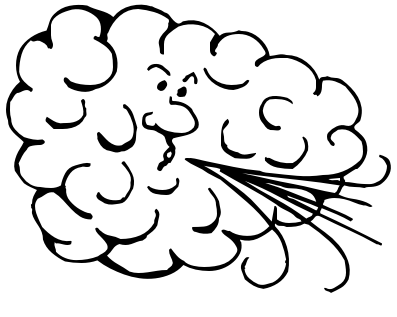 Our
Our 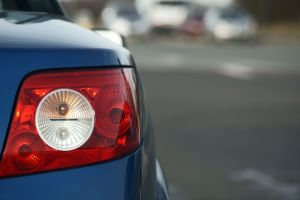 California’s vehicle code provides that drivers must ensure movement is safe and signal their intent before turning when another vehicle may be impacted by the movement. The driver’s manual reiterates the importance of using signals for a lane change, a circumstance in which many drivers neglect the precaution. There appears to be little data on how many accidents are caused by a driver’s failure to signal. However, an interesting study by the American Transportation Institute reports that one of the best predictors of future accidents involving truck drivers was a prior citation for failure to signal. The study found the likelihood of a future crash increased by a whopping 97 percent when the driver had previously been convicted of a signal-related offense, making it the top predictor of future collisions.
California’s vehicle code provides that drivers must ensure movement is safe and signal their intent before turning when another vehicle may be impacted by the movement. The driver’s manual reiterates the importance of using signals for a lane change, a circumstance in which many drivers neglect the precaution. There appears to be little data on how many accidents are caused by a driver’s failure to signal. However, an interesting study by the American Transportation Institute reports that one of the best predictors of future accidents involving truck drivers was a prior citation for failure to signal. The study found the likelihood of a future crash increased by a whopping 97 percent when the driver had previously been convicted of a signal-related offense, making it the top predictor of future collisions. 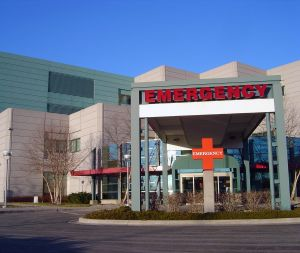 As reported in the San Francisco Chronicle, California has just lifted a ban that resulted from concerns about unsafe food products. The ban was issued after five children in our state became ill after drinking raw milk produced by Organic Pastures in Fresno. All of the children were found to have the same strain of E. Coli. Three of the young people were hospitalized with hemolytic uremic syndrome, a dangerous illness that can lead to kidney failure. Although investigators did not find the bacteria in samples of the milk, it was deemed the likely source since all five children had consumed the dairy’s raw milk in the period before they fell ill. The state shut down production at the dairy temporarily and recalled Organic Pastures products. At the time of the Chronicle’s report, the dairy had passed necessary inspections and was allowed to resume production of all products with the exception of raw colostrum. Investigators have continued to quarantine the final product out of concern that it may carry dangerous bacteria.
As reported in the San Francisco Chronicle, California has just lifted a ban that resulted from concerns about unsafe food products. The ban was issued after five children in our state became ill after drinking raw milk produced by Organic Pastures in Fresno. All of the children were found to have the same strain of E. Coli. Three of the young people were hospitalized with hemolytic uremic syndrome, a dangerous illness that can lead to kidney failure. Although investigators did not find the bacteria in samples of the milk, it was deemed the likely source since all five children had consumed the dairy’s raw milk in the period before they fell ill. The state shut down production at the dairy temporarily and recalled Organic Pastures products. At the time of the Chronicle’s report, the dairy had passed necessary inspections and was allowed to resume production of all products with the exception of raw colostrum. Investigators have continued to quarantine the final product out of concern that it may carry dangerous bacteria. Some residents had flood insurance, and they thought surely the hard earned money they paid to their insurance company would allow them to rebuild. But those residents discovered that when they called about their flood insurance, their insurance company told them that the situation did not count as a flood. The company claimed it was a broken pipe and directed the policyholders to their liability insurance. But they were then told by the liability insurance handlers that it was a flood, so the liability insurance does not cover the damage. This ridiculous dilemma caused not only many people to worry about their homes, but also severely affected small local businesses trying to stay afloat in a recession economy.
Some residents had flood insurance, and they thought surely the hard earned money they paid to their insurance company would allow them to rebuild. But those residents discovered that when they called about their flood insurance, their insurance company told them that the situation did not count as a flood. The company claimed it was a broken pipe and directed the policyholders to their liability insurance. But they were then told by the liability insurance handlers that it was a flood, so the liability insurance does not cover the damage. This ridiculous dilemma caused not only many people to worry about their homes, but also severely affected small local businesses trying to stay afloat in a recession economy.